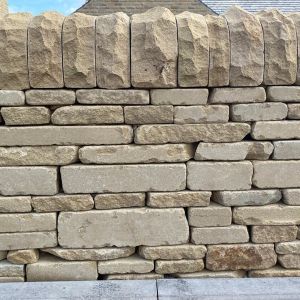We use cookies to make your experience better. To comply with the new e-Privacy directive, we need to ask for your consent to set the cookies. Learn more.
Walling stone refers to natural stone used in the construction of walls, both for structural and aesthetic purposes. It has been a key material for centuries, from ancient stone structures like the Great Wall of China and the castles of Europe to modern dry-stone walling practices seen in rural and urban environments. Walling stones come in various types, including limestone, sandstone, granite, and slate, each with its unique characteristics that contribute to their strength, durability, and visual appeal.
Walling stone refers to natural stone used in the construction of walls, both for structural and aesthetic purposes. It has been a key material for centuries, from ancient stone structures like the Great Wall of China and the castles of Europe to modern dry-stone walling practices seen in rural and urban environments. Walling stones come in various types, including limestone, sandstone, granite, and slate, each with its unique characteristics that contribute to their strength, durability, and visual appeal.
Walling Stone

Walling Stone
Walling stone refers to natural stone used in the construction of walls, both for structural and aesthetic purposes. It has been a key material for centuries, from ancient stone structures like the Great Wall of China and the castles of Europe to modern dry-stone walling practices seen in rural and urban environments. Walling stones come in various types, including limestone, sandstone, granite, and slate, each with its unique characteristics that contribute to their strength, durability, and visual appeal.
Walling stone refers to natural stone used in the construction of walls, both for structural and aesthetic purposes. It has been a key material for centuries, from ancient stone structures like the Great Wall of China and the castles of Europe to modern dry-stone walling practices seen in rural and urban environments. Walling stones come in various types, including limestone, sandstone, granite, and slate, each with its unique characteristics that contribute to their strength, durability, and visual appeal.





